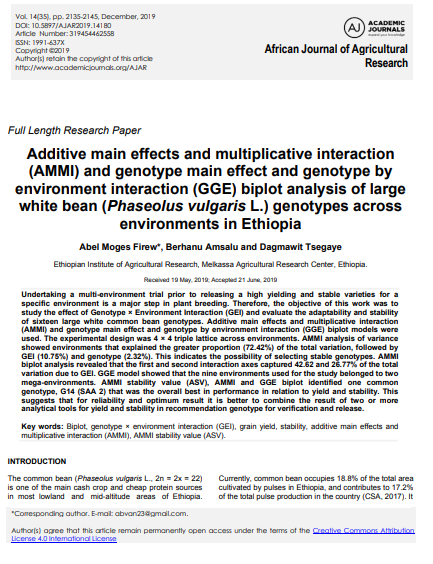Additive main effects and multiplicative interaction (AMMI) and genotype main effect and genotype by environment interaction (GGE) biplot analysis of large white bean (Phaseolus vulgaris L.) genotypes across environments in Ethiopia
Summary
Undertaking a multi-environment trial prior to releasing a high-yielding and stable variety for a specific environment is a major step in plant breeding. Therefore, the objective of this work was to study the effect of Genotype × Environment Interaction (GEI) and evaluate the adaptability and stability of 16 large white common bean genotypes. Additive main effects and multiplicative interaction (AMMI) and genotype main effect and genotype by environment interaction (GGE) biplot models were used. The experimental design was a 4 × 4 triple lattice across environments. AMMI analysis of variance showed environments that explained the greater proportion (72.42%) of the total variation, followed by GEI (10.75%) and genotype (2.32%). This indicates the possibility of selecting stable genotypes. The AMMI biplot analysis revealed that the first and second interaction axes captured 42.62% and 26.77% of the total variation due to GEI. The GGE model showed that the nine environments used for the study belonged to two mega-environments. The AMMI stability value (ASV), AMMI, and GGE biplot identified one common genotype, G14 (SAA 2), which was the best overall in performance in relation to yield and stability. This suggests that for reliability and optimal results it is better to combine the results of two or more analytical tools for yield and stability in recommending genotype for verification and release.
Open resource Download resource Access resource on external site

